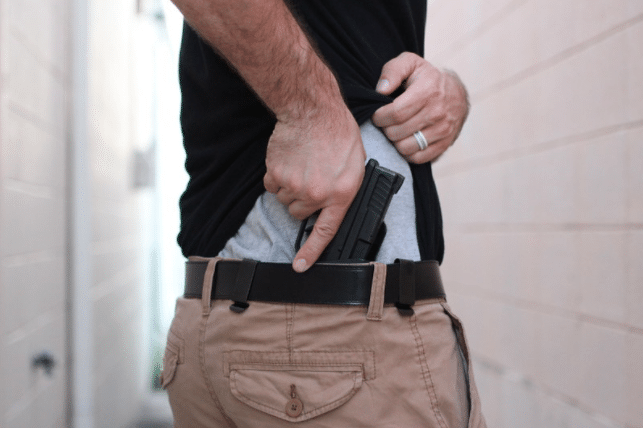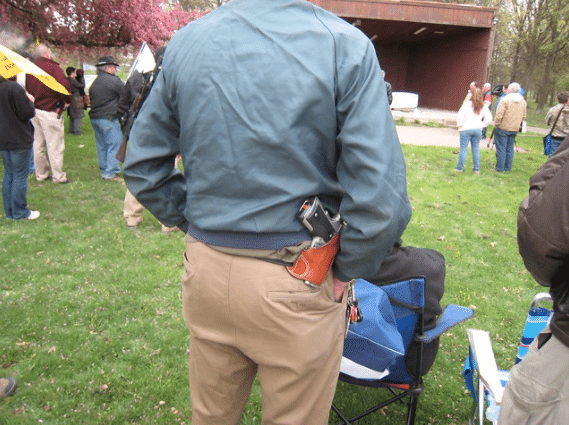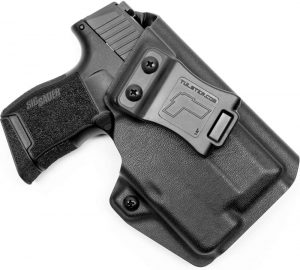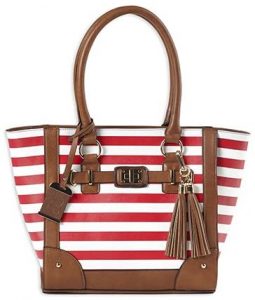Introduction
Carrying a gun on your person is your right. It’s a constitutional right that cannot be taken away, so long as you remain a law-abiding citizen. It is, however, harder to exercise this right in some states than it is in others. In this article, we will talk briefly about the different types of gun laws in various states.
This is not meant to be a legal guide, but more of an overview. We will also discuss the difference between open carrying concealed and carrying openly, including the pros and cons of each.
May Issue vs Shall Issue vs Constitutional Carry
In the United States, laws regarding the issuing of carry permits are set at the state level. Every state has slightly different laws, but they fall into three general categories. The three categories are May Issue, Shall Issue, and Constitutional Carry.
May Issue
States that generally have tougher gun laws are usually May Issue states. This means that there is no requirement for the state to issue a carry license, even if the applicant completes all of the requirements and pays all of the fees. It is completely at the state’s discretion. (This seems like a violation of your constitutional right, doesn’t it?) Myriad lawsuits have been filed against May Issue states claiming that they have denied someone their right to carry a firearm, and yet many states remain May Issue states.
To break it down further, you must understand that although the state sets the law, it’s the local jurisdiction (usually county Sherriff’s office) that has the discretionary power. In May Issue states, whether or not you receive your permit often comes down to the reason you are requesting one. Outside of large cities, the general reason of “self-defense” is usually adequate to receive a permit. However, in large cities, you often need to show a specific threat to your safety that would create a need for self-defense.
Currently, the May Issue states are California, Connecticut, Delaware, Hawaii, Maryland, Massachusetts, New Jersey, New York, and Rhode Island.
Shall Issue
Shall Issue states are more straight-forward with their issuing of carry permits. As long as you are legally able to apply for a permit, complete the appropriate steps, and pay the fees, you shall be issued a permit. There is no need to justify why you’re requesting a permit.
The current Shall Issue states are Alabama, Colorado, District of Columbia, Florida, Georgia, Illinois, Indiana, Iowa, Louisiana, Michigan, Minnesota, Montana, Nebraska, Nevada, New Mexico, North Carolina, Ohio, Oregon, Pennsylvania, South Carolina, Tennessee, Texas, Utah, Virginia, Washington, and Wisconsin. As you can see, there are many more Shall issue states than May Issue.
Constitutional Carry
Permitless Carry, also called Constitutional Carry, is a growing trend in pro-gun states. The number of Constitutional Carry states has nearly doubled in just the last few years. In Constitutional Carry states, as long as you are legally able to own a firearm, you can carry that firearm without a permit.
There are, however, several variations of the Constitutional Carry that vary by state. Most were at one time Shall Issue states, and continue to issue permits to their residents for the purpose of reciprocity with other states. Also, some states limit the Constitutional Carry to carrying concealed. However, most have no such restrictions.
Currently, the Constitutional Carry states are Alaska, Arizona, Arkansas, Idaho, Kansas, Kentucky, Maine, Mississippi, Missouri, New Hampshire, North Dakota, Oklahoma, South Dakota, Vermont, West Virginia, and Wyoming.
Concealed Carry

By far, the vast majority of citizens who carry guns legally do so concealed. This is because concealed carrying has many tactical advantages over open carrying, which we will discuss in a moment.
There are several ways to carry a concealed pistol, and you should try several until you find which works best for you. Inside The Waistband (IWB) holsters are popular because they can conceal a small pistol extremely well, are relatively comfortable, and place the firearm in a good position to quickly draw from in the event that you need it.
Pocket holsters are a way to conceal very small pistols, such as a J-Frame revolver or Ruger LCP. They can be carried in the front pocket or back pocket. They do not allow for as quick a draw as an IWB holster, but they are a good alternative if you aren’t wearing a belt.
Options for Women
For ladies, special purses are made with a compartment specifically for a concealed pistol. They position the gun for easy access and quick draw. Carrying a pistol in the main compartment of a purse is also a possibility. Some other, less common methods of concealed carry include the shoulder holster, ankle holster, and belly band holster.
Pros vs Cons
There are more pros to carrying concealed than cons.
Pros
- Gives you the element of surprise in the event of an attack
- You blend in with everyone else, no unneeded attention
- Your firearm is more secure
Cons
- Slightly slower reaction time compared to open carry
- Can be somewhat less comfortable compared to open carry
Open Carry

Open carry has almost become a form of protest in the past several years. Many gun-rights activists believe that showing up to public events openly carrying pistols and rifles is a good way to advocate for their position. While others feel that the open carriers look like “gun nuts” and have actually become a detriment to the fight for gun rights.
The open carry movement applies to both pistols and rifles. The most noticeable open carriers are the ones that sling AR-15s while doing their grocery shopping, attending a rally, or just standing at an intersection hoping people will see them. This type of open carry is about making a statement and has little to do with personal safety, although the old maxim “An armed society is a polite society” is certainly true. Then there are the pistol carriers. Open carrying a pistol is less about making a statement and more about actual safety.
The opposite of concealed carrying, open pistol carry lets everyone around you know that you are armed and (for the love of God hopefully) trained to use it. Open carry of pistols is most often done with an Outside The Waistband (OWB) holster on the belt, although drop-leg holsters and chest harness holsters are also options.
Pros vs Cons
These are pros and cons for open carry as I see it. Open carry advocates would probably disagree with some of these points.
Pros
- Announces your presence wherever you go, everyone knows you are armed
- Usually quicker access to your firearm than concealed carry
Cons
- You instantly become the first target for a potentially bad guy, no element of surprise
- Your firearm is less secure to someone touching/taking it, also falling out
So, Which Is Better?
Which is better, carrying concealed or carrying openly? The answer is really a matter of opinion. I prefer to carry concealed because I don’t want to make myself a target to bad guys, and nobody needs to know I have a gun until it’s time to use it. But I acknowledge the right of every gun owner to choose which method of carrying is best for them.
Conclusion
Carrying a firearm carries with it great responsibility. It is not something to be taken lightly. It is highly recommended that you take a basic pistol safety course and continue to train with your firearm until you are completely comfortable holding it, firing it, and carrying it loaded.
Open carry is great for making a statement, and making sure everyone knows that you’re armed (if that’s what you want). Concealed carry allows you to be discretely armed, and nobody needs to know you are armed until the time comes to use it. This allows you to assess a situation (perhaps a mass shooting) before the gunman knows that you are a threat to them.
Caligunner Copyright © 2020.
All Rights Reserved. Caligunner.com is a participant in the Amazon Services LLC Associates Program, an affiliate advertising program designed to provide a means for sites to earn advertising fees by advertising and linking to amazon.com.



